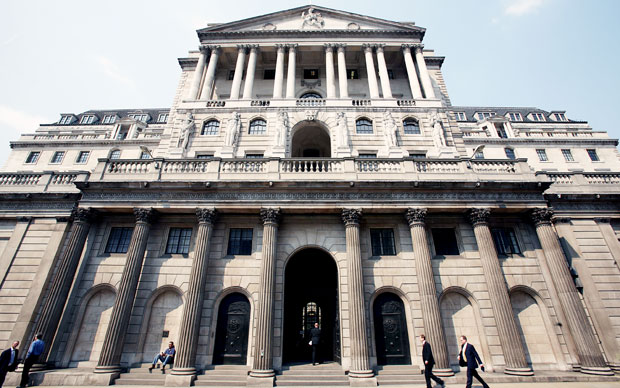Turn-up. Eat lunch. Swap a few pleasantries with the other people in the room, leave interest rates on hold, and then collect a cheque on the way out. I am starting to wonder why I can’t have a job on the Bank of England’s Monetary Policy Committee. It certainly doesn’t look terribly difficult.
This week, the Bank is making a change to its usual routine. Instead of just announcing the latest monthly decision on rates, it is also releasing a vast amount of fresh information on the economy, in a move that the media have already dubbed ‘Super Thursday’, presumably on the grounds that unlike plain old ordinary Thursdays, City journalists and economic pundits will have lots of new data and forecasts to play around with.
But the real ‘Super Thursday’ will not involve more data, or a few more forecasts. It will be when the Bank actually does something – and what it needs to do more than anything is start the process of putting rates back up to normal levels again.
It is now more than six years since the Bank slashed interest rates down to a 300-year-low of 0.5%. It is even longer since it actually took the decision to put rates up. That was all the way back in May 2007, when it put up rates to what now seems the extraordinary level of 5.5%. The MPC has now met 77 times, without doing anything at all. Of course, launching quantitative easing counts as a policy move by the Bank, but it hasn’t even done that since 2011, which is now four years ago. Indeed, the current Governor, the Canadian Mark Carney, has managed to do precisely nothing since he took up residence in Threadneedle Street – hardly great value for money for his £480,000 annual salary.
Of course, no one wants a hyper-active central bank, constantly tweaking rates. There is even more to be said for ‘masterful inactivity’ in central banking than in any other field of government. The idea the central bankers were all-knowing supermen who could steer the economy like a perfectly tuned BMW with occassional flicks on the levers of monetary policy was a myth blown away in the crash of 2008.
And yet, the Bank is running two big risks by leaving policy on hold for so long. The first is that interest rates at close on zero come to be accepted as normal. Homeowners will have taken out mortgages at those levels, and companies will have borrowed money. You can tell them as often as you like that it is exceptional and won’t last. But people can’t be expected to believe that forever. If something lasts for five or six years, it is very hard not to treat it as ‘normal’ – what other word is there exactly?
The second is that the Bank is leaving itself with no room to act. Unless Gordon Brown turns out to have been belatedly right, and ‘boon’n’bust’ really has been abolished after all, then sooner or later there will be another recession. And what will the Bank do then if it can’t cut rates? Indeed, one reason the Federal Reserve in the US is so desperate to raise rates this autumn is to create some space to cut later on.
The first rise in rates in almost a decade – if it ever comes – will be the big story. In the meantime, more data is just a distraction – a form of displacement activity for a Bank that increasingly looks like it can’t make up its mind what to do.






Comments